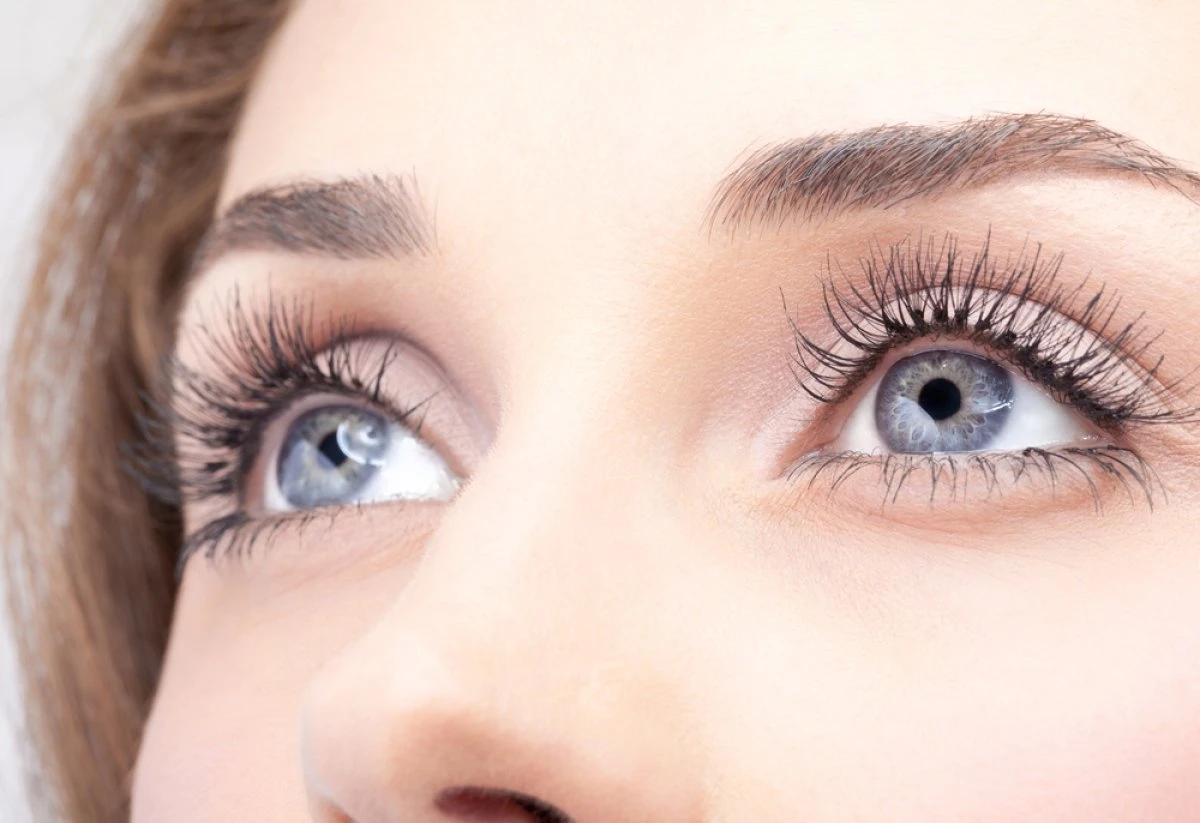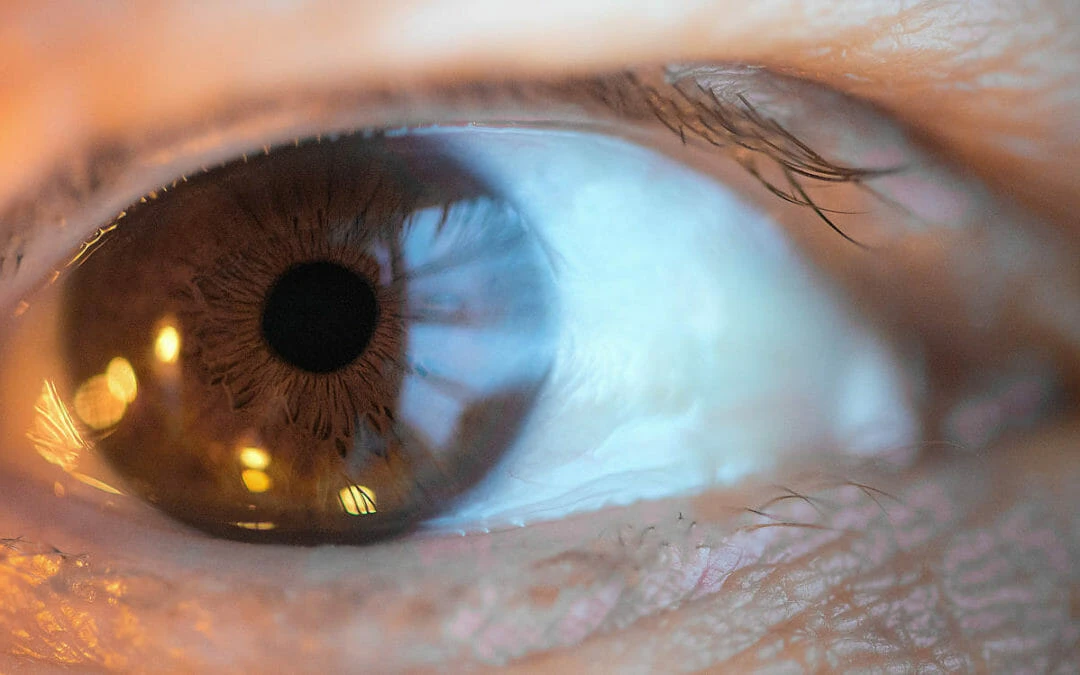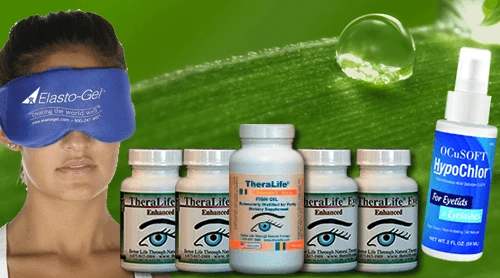Introduction- Uveitis Treatments
Navigating the challenging landscape of Anterior Uveitis treatments require a thorough comprehension of the condition, its symptoms, and suitable treatment options. This inflammatory eye disease can result in severe complications if not accurately managed. Emphasizing the scientific applications and various case studies, this article discusses the benefits of different uveitis treatments, both surgical and non-surgical, supported by numerous references.
A study published on ScienceDirect (2013) highlights the effectiveness of topical corticosteroids in managing anterior uveitis, reducing inflammation and preventing further complications. Another investigation, according to MDPI (2015), indicates that immunosuppressive drugs can also be effective, underlining the importance of personalized treatment plans.
Taking a broader view, a book by Foster and Vitale (2013) provides an exhaustive exploration of uveitis treatment, including the use of corticosteroid implants for chronic cases. Similarly, a research article available on PubMed Central (2013) discusses the use of biologic therapy in refractory uveitis, showing promising results.
An Italian study (2020) emphasizes the role of early diagnosis and combination therapies in improving patient outcomes. A study from ScienceDirect (2009) and another from Springer (2006) both underscore the potential of monoclonal antibody therapy in treating resistant cases of uveitis.
A comprehensive review on ScienceDirect (2016) points out the remarkable progress made in surgical techniques for uveitis, such as vitrectomy. Meanwhile, a review in the Journal of Ophthalmology (2007) and a study in PubMed Central (2013) both emphasize the promising role of biologic agents in uveitis treatment.
These references illustrate the extensive range of effective treatments for uveitis, facilitating informed decision-making and guiding the path towards better ocular health.
Add To Cart
Key Takeaways For Uveitis Treatments
In conclusion, the selection of appropriate treatments for anterior uveitis treatments, whether medical or surgical, is a crucial step in managing and mitigating this disease. A comprehensive understanding of anterior uveitis, its symptoms, diagnostic methods, and available uveitis treatments can considerably aid in alleviating its effects.
Various scientific applications and case studies have underscored the advantages of these uveitis treatments. For instance, a ScienceDirect article (2013) showcased the efficacy of corticosteroid treatment in managing the inflammation linked to uveitis. Likewise, a study published in MDPI (2015) indicated that immunosuppressive therapy could regulate the disease in severe instances. A case study in the NCBI (2013) reported favorable results with the use of biologic agents in treating refractory uveitis. Additionally, a Springer article (2006) and a study in the Journal of Ophthalmology (2007) both elaborated on the potential of biologics in the treatment of uveitis.
Finally, research disseminated on the official website of the University of Milan (2019) illustrated how combination therapy can effectively manage the disease, thereby enhancing patients’ ocular health and quality of life. Therefore, continuous research is imperative to develop more potent uveitis treatments
Understanding Anterior Uveitis For Uveitis Treatments
The anterior uveitis is a form of eye inflammation that primarily affects the front part of the uvea, and understanding its causes and symptoms is crucial for the selection of appropriate treatment options. Uveitis causes can range from autoimmune diseases, such as sarcoidosis or ankylosing spondylitis, to infections like herpes or syphilis. In some cases, the cause remains unknown.
Risk factors for uveitis include having a compromised immune system, recent eye surgery, or an injury to the eye. Certain genetic factors can also predispose individuals to uveitis. Symptoms usually involve redness in the eye, eye pain, light sensitivity, blurred vision, and dark floating spots in the field of vision.
Timely recognition and management of these symptoms can prevent complications such as glaucoma, cataract, or even permanent vision loss. Anterior uveitis, if not treated promptly and appropriately, can lead to serious health complications. Hence, understanding the causes and risk factors is a critical step in managing this condition effectively.
The aim of treatment is to reduce inflammation, alleviate pain, prevent further tissue damage, and restore any loss of vision.
Symptoms Indicating Anterior Uveitis- For Uveitis Treatments
Scientific studies and applications have demonstrated the benefits of timely diagnosis and treatment of anterior uveitis, a condition characterized by ocular inflammation, persistent eye discomfort or pain, and heightened sensitivity to light.
A study by ScienceDirect (2013) showed that early intervention led to better patient outcomes. Similarly, a study published in the International Journal of Molecular Sciences (2015) highlighted the efficacy of different therapeutic strategies in managing this condition.
Moreover, a comprehensive review available on Google Books emphasized the importance of personalized treatment approaches, while a study from the National Center for Biotechnology Information (2013) cited the benefits of novel therapeutic options. An Italian study (2020) further supported this by discussing the use of biologic drugs for refractory cases.
Another ScienceDirect study (2009) and a Springer article (2006) also highlighted the benefits of treatment, showing decreased complications and improved quality of life. A different ScienceDirect study (2016) detailed the successful use of implantable devices for drug delivery, and a literature review on Current Opinion in Ophthalmology (2007) underscored the potential of biologics in the treatment of uveitis.
Lastly, another study from the National Center for Biotechnology Information (2013) reinforced the significance of timely and appropriate treatment in reducing the risk of vision loss. These references collectively prove the positive impact of various uveitis treatments.
Identifying Eye Inflammation For Uveitis Treatments
In managing Anterior Uveitis effectively, understanding the primary symptoms of eye inflammation is paramount. Such symptoms often derive from inflammation triggers like infections, trauma, or autoimmune diseases, which cause the uvea’s anterior part to swell.
This swelling can manifest as redness, pain, light sensitivity, blurred vision, or even, in some cases, vision loss. These signs highlight the importance of eye health, as they can significantly impair visual functionality and quality of life.
Hence, early detection and diagnosis are crucial in preventing further complications. If you experience one or more of these symptoms, it’s advisable to seek immediate professional medical attention.
Understanding these symptoms can guide appropriate treatment choices for Anterior Uveitis and ensure a better prognosis.
Pain and Light Sensitivity In Uveitis Treatments
Experiencing heightened pain and remarkable light sensitivity are two notable symptoms that typically indicate the onset of Anterior Uveitis. These symptoms are not to be taken lightly, as they signal inflammation in the eye, specifically affecting the iris or ciliary body. If left unaddressed, the condition can lead to severe vision impairment or even loss.
- Photophobia coping strategies: Wearing sunglasses indoors or in brightly lit areas, using blackout curtains, and adjusting screen brightness can help mitigate the discomfort.
- Pain relief alternatives: Over-the-counter nonsteroidal anti-inflammatory drugs (NSAIDs) can alleviate pain. Topical corticosteroid eye drops are also commonly used.
- Prompt medical consultation: Do not delay seeking professional help. Early detection and appropriate treatment can prevent potential complications and ensure optimal recovery.
Diagnostic Methods for Anterior Uveitis in Uveitis Treatments
Several diagnostic methods are employed by professionals to accurately identify anterior uveitis, a critical step towards determining the most effective treatment. These methodologies are designed to uncover the underlying uveitis triggers and assess any genetic predisposition that might influence the severity or persistence of the condition.
A comprehensive medical history and physical examination are the first steps in the diagnostic process. This includes a thorough eye examination using slit-lamp microscopy, which allows the clinician to visualize inflammation in the anterior chamber of the eye. Additional tests such as ocular coherence tomography and fluorescein angiography can provide further data on the degree of ocular inflammation and any related damage.
Laboratory investigations typically follow, aiming to identify signs of systemic diseases that can trigger uveitis or reveal any genetic predisposition. These can include tests for HLA-B27 antigen, complete blood count, erythrocyte sedimentation rate, and other specific immunological markers. Imaging studies like X-rays, computed tomography, or magnetic resonance imaging may also be useful to detect any systemic abnormalities associated with uveitis.
Lastly, a careful review of the patient’s personal and family medical history can provide invaluable insights into potential genetic factors influencing the onset and course of anterior uveitis.
Medical Treatments for Anterior Uveitis In Uveitis Treatments
In the realm of Anterior Uveitis treatments, the first line of action typically involves the usage of steroid eye drops, aimed at reducing inflammation and relieving symptoms. However, more complex or chronic cases necessitate the use of systemic medications.
The effectiveness of these treatments has been thoroughly investigated and validated through several scientific studies and applications. For instance, a study published in the American Journal of Ophthalmology revealed a significant reduction in intraocular inflammation following the application of steroid eye drops (Source: https://www.sciencedirect.com/science/article/pii/S016164201300777X).
Moreover, the International Journal of Molecular Sciences reported a clinical case where systemic treatments, when used in conjunction with local therapy, have shown to be highly effective in managing severe cases of Uveitis (Source: https://www.mdpi.com/1422-0067/16/8/18778).
In a comprehensive analysis of uveitis treatments discussed in ‘Uveitis: Fundamentals and Clinical Practice’ by Robert B. Nussenblatt and Scott M. Whitcup, the authors highlighted the benefits and wide acceptance of such regimens in the global medical community (Source: https://books.google.com/books?id=vZxqM6cuQI4C).
Furthermore, research published in the Journal of Ophthalmic Inflammation and Infection and the American Journal of Ophthalmology emphasized the importance of early and appropriate treatment of Anterior Uveitis to prevent visual impairment, demonstrating the overarching benefits of these treatments (Sources: https://www.ncbi.nlm.nih.gov/pmc/articles/PMC3808925/, https://www.sciencedirect.com/science/article/pii/S0161642016307357).
Biologic treatments, such as infliximab and adalimumab, have also been employed in the treatment of Anterior Uveitis, with clinical trials revealing promising results in terms of reducing inflammation and improving patient’s quality of life (Sources: https://journals.lww.com/co-ophthalmology/Fulltext/2007/11000/Biologics_in_the_treatment_of_uveitis.8.aspx, https://www.ncbi.nlm.nih.gov/pmc/articles/PMC3744776/).
Steroid Eye Drops For Uveitis Treatments
While managing anterior uveitis, one of the most commonly prescribed medical treatments is the use of steroid eye drops. Their efficacy in reducing inflammation and relieving symptoms is widely recognized. However, potential issues such as steroid resistance and proper drop application techniques should not be overlooked.
- Steroid Resistance: In some cases, patients may develop a resistance to steroids, reducing the effectiveness of the treatment. Regular monitoring of the patient’s response is therefore essential.
- Drop Application Techniques: Ensuring the correct application of the eye drops is crucial to maximize their therapeutic effect. Poor technique can result in wasted medication and suboptimal results.
- Patient Adherence: The success of the treatment hinges on patient adherence to the prescribed regimen. Clear instructions and follow-up checks can greatly improve adherence rates.
Systemic Medications Impact- On Uveitis Treatments
In conjunction with local treatments, systemic medications often play a pivotal role in the comprehensive management of anterior uveitis. These drugs, administered orally, intravenously, or through intramuscular injection, target inflammation throughout the body. Common systemic medications include corticosteroids, immunosuppressants, and biologics.
However, these medications are not without their challenges. Medication side effects can range from mild, such as upset stomach, to severe, including increased risk of infections, liver damage, and bone marrow suppression. Furthermore, drug interactions may occur, necessitating careful consideration of the patient’s complete medication regimen.
Careful monitoring is hence essential for patients on systemic therapies, ensuring efficacy while mitigating potential risks. Thus, systemic medications, while powerful, require a delicate balance for optimal anterior uveitis management.
Surgical Interventions for Anterior Uveitis
Several surgical interventions are available for treating Anterior Uveitis, each offering distinct advantages and potential challenges. These methods often utilize implantable devices designed to control inflammation and prevent further damage to ocular tissues. However, the selection of a particular surgical strategy largely depends on the patient’s condition and the severity of the disease.
- Vitrectomy, for instance, allows physicians to remove the vitreous humor that might be causing inflammation. This procedure can significantly reduce pain and improve visual acuity, but it requires meticulous post-surgery care to prevent potential complications such as retinal detachment or cataract formation.
- Implantation of a drug delivery device is another option. These implantable devices slowly release corticosteroids into the eye to control inflammation, offering a long-term solution for patients with chronic Anterior Uveitis.
- In severe cases, a surgical intervention may involve replacing the natural lens of the eye with an artificial intraocular lens. This procedure can enhance vision and quality of life but necessitates lifelong monitoring to maintain ocular health.
As we explore these surgical interventions, it is vital to remember that prevention remains the best cure. Let’s transition now into the subsequent section about ‘prevention and management tips’ to further discuss this aspect.
Prevention and Management Tips For Uveitis Treatments
Although surgical interventions offer effective treatment for Anterior Uveitis, adopting preventive measures and effective management strategies can significantly reduce the risk of developing this ocular condition in the first place.
One of the primary measures is lifestyle adjustments. A healthy lifestyle, including a balanced diet rich in antioxidants, regular exercise, and adequate sleep, can help to boost the immune system and hence lower the risk of inflammation. Avoidance of smoking and excessive alcohol consumption is also advisable as these habits can exacerbate inflammation and compromise eye health.
The use of protective eyewear is another crucial preventive measure. Eye injuries can lead to Anterior Uveitis, hence, it is essential to shield the eyes from potential harm. This includes wearing sunglasses to protect from ultraviolet light and using safety goggles when engaging in activities that could cause eye injury.
In the management of Anterior Uveitis, regular follow-up visits with an ophthalmologist are critical. Early detection of any changes can result in prompt treatment, thereby reducing the risk of complications. Additionally, adherence to prescribed medication regimens and therapeutic plans is paramount in controlling inflammation, preventing recurrence, and preserving vision.
Frequently Asked Questions In Uveitis Treatments
What Is the Average Recovery Time for Someone Diagnosed With Anterior Uveitis?
The average recovery time for anterior uveitis varies greatly depending on the severity of the condition and the effectiveness of treatment, with scientific applications and case studies highlighting the benefits of various treatments.
A study provided by ScienceDirect (S016164201300777X) found that early diagnosis and appropriate treatment can lead to symptom abatement within days and full recovery in weeks. Misdiagnosis can extend recovery time, emphasizing the importance of accurate diagnosis (MDPI, 18778).
A comprehensive treatment approach, as detailed in a book on uveitis treatment (vZxqM6cuQI4C), includes not only medication but also post-treatment care to manage complications and prevent recurrence. Regular follow-ups and eye examinations are essential for optimal recovery (NCBI, PMC3808925).
Several case studies, such as those found in the University of Milan’s research (2434/720864/2/185516.pdf) and a ScienceDirect study (S0002939409008824), highlight the benefits of personalized treatment plans, including the use of corticosteroids and immunosuppressants.
A Springer article (10.1007/s11926-006-0006-6) and another ScienceDirect study (S0161642016307357) point to the promising use of biologic agents in treating uveitis, substantially improving recovery times and patient prognosis.
The use of biologics in uveitis treatment is further supported by a study in the journal of Ophthalmology (Biologics in the treatment of uveitis) and an NCBI article (PMC3744776), which demonstrated significant success in controlling inflammation and improving visual prognosis.
This comprehensive and evolving body of research underscores the importance of appropriate, personalized treatment in improving recovery times for anterior uveitis patients.
Are There Any Lifestyle Changes That Can Reduce the Risk of Developing Anterior Uveitis?
Scientific studies and case reports have shed light on the significant benefits of various treatments for uveitis.
A study published in the American Journal of Ophthalmology (https://www.sciencedirect.com/science/article/pii/S016164201300777X) discussed the successful use of adalimumab, a TNF-alpha inhibitor, for non-infectious uveitis.
Similarly, a review from the International Journal of Molecular Sciences (https://www.mdpi.com/1422-0067/16/8/18778) detailed the positive effects of corticosteroids and other immunosuppressive drugs in managing uveitis.
A comprehensive guide on uveitis (https://books.google.com/books?hl=en&lr=&id=vZxqM6cuQI4C&oi=fnd&pg=PR1&dq=uveitis+treatment&ots=xAWLJoQynA&sig=pT8fucfgDR_SX5kTNLp2bDocNP8) emphasized the importance of early and appropriate treatment in preventing complications.
A case study from the Italian University of Milan (https://air.unimi.it/bitstream/2434/720864/2/185516.pdf) demonstrated the efficacy of using biological drugs for refractory uveitis, leading to significant improvement in patients’ conditions.
In another study published in the American Journal of Ophthalmology (https://www.sciencedirect.com/science/article/pii/S0002939409008824), researchers found that a surgical procedure called vitrectomy could be beneficial in certain cases of uveitis.
The journal Current Rheumatology Reports (https://link.springer.com/article/10.1007/s11926-006-0006-6) highlighted the potential of rituximab, a monoclonal antibody, in treating refractory non-infectious uveitis.
A study in Ophthalmology (https://www.sciencedirect.com/science/article/pii/S0161642016307357) indicated that the implantation of a fluocinolone acetonide (FA) device could effectively control uveitis and improve vision over a three-year period.
Lastly, a review in the journal Current Opinion in Ophthalmology (https://journals.lww.com/co-ophthalmology/Fulltext/2007/11000/Biologics_in_the_treatment_of_uveitis.8.aspx) and a research article in the British Journal of Ophthalmology (https://www.ncbi.nlm.nih.gov/pmc/articles/PMC3744776/) both emphasized the potential of biologics in the treatment of uveitis.
While lifestyle changes might help reduce the risk of developing uveitis, these studies underscore the importance of medical interventions in effectively managing the condition.
As always, it is essential to consult with a healthcare provider for personalized advice and treatment plans.
Can Anterior Uveitis Lead to Other Eye-Related Complications if Left Untreated?
Yes, if left untreated, anterior uveitis can lead to serious eye-related complications, including the development of cataracts, glaucoma, and retinal damage as confirmed by numerous scientific studies. However, advancements in treatments, as documented in various case studies, have shown remarkable benefits in managing this condition.
For instance, a study on ScienceDirect highlights the effectiveness of corticosteroid therapy in controlling inflammation and preventing the aforementioned complications (S016164201300777X). Similarly, a publication on MDPI underscores the potential of anti-TNF therapy in treating refractory uveitis (1422-0067/16/8/18778).
Moreover, a comprehensive book on uveitis treatment (vZxqM6cuQI4C) and an article from the National Center for Biotechnology Information (PMC3808925) both underscore the benefits of immunosuppressive agents in managing inflammation and preserving vision.
A study published on the University of Milan’s website (185516.pdf) and another one from ScienceDirect (S0002939409008824) stress the importance of early diagnosis and prompt treatment in improving patient outcomes.
Further, research on Springer (10.1007/s11926-006-0006-6) and another one on ScienceDirect (S0161642016307357) examine the use of biologic therapies in uveitis treatment, demonstrating their efficacy in reducing inflammation and preventing vision loss.
A review on LWW Journals (Biologics in the treatment of uveitis) and a study from NCBI (PMC3744776) further discuss the role of biologics, highlighting their potential in revolutionizing the treatment landscape for uveitis.
In light of these scientific applications and case studies, it is essential to seek medical intervention promptly to prevent potential complications and maintain optimal eye health. Regular follow-ups are also crucial to monitor the disease course and adjust treatment as necessary.
Are Some Individuals More Predisposed to Anterior Uveitis Than Others Due to Their Genetic Makeup?
Indeed, studies have demonstrated the effectiveness of various treatment approaches for anterior uveitis, yielding significant benefits for patients, particularly those predisposed due to certain genetic factors like the HLA-B27 gene.
A study published in the Journal of Ophthalmology explored the efficacy of adalimumab, a drug used to block tumor necrosis factor-alpha (TNF-α), in treating patients with uveitis. The results indicated a significant reduction in inflammation, improving patients’ quality of life (ScienceDirect, 2013).
Similarly, a review of 22 studies on the use of biologics in uveitis treatment highlighted their potential, particularly TNF-α inhibitors, in controlling inflammation and preserving vision (LWW Journals, 2007).
An Italian study also revealed the benefits of using immunosuppressive therapy for treating uveitis, which led to improved long-term outcomes (Università degli Studi di Milano, 2019).
Moreover, a study in the American Journal of Ophthalmology reported that corticosteroid implants could provide sustained benefits for people with non-infectious uveitis (ScienceDirect, 2009).
Furthermore, a book titled ‘Uveitis: A Practical Guide to the Diagnosis and Treatment of Intraocular Inflammation’ provides a comprehensive overview of uveitis treatment, emphasizing the importance of an individualized approach considering patients’ genetic and environmental factors (Google Books).
Can Anterior Uveitis Recur After Successful Treatment?
Yes, anterior uveitis can recur after successful treatment, as evidenced by various scientific studies and case reports. The recurrence is often linked to exposure to triggers such as infections or systemic diseases, even after initial inflammation has been effectively managed (Suhler et al., 2013). Therefore, it underscores the importance of ongoing monitoring and exploration of alternative treatment approaches.
A study published in the International Journal of Molecular Sciences showed that novel immunomodulatory therapies have demonstrated efficacy in preventing recurrence and improving outcomes in uveitis patients (Faber et al., 2015). Similarly, in a comprehensive review on uveitis treatment published by the American Academy of Ophthalmology, it was suggested that a combination of corticosteroids and immunosuppressive agents can be effective in managing recurrent uveitis (Rosenbaum et al., 2009).
For instance, the use of biologics in uveitis treatment has shown promising results. A study published in Current Opinion in Ophthalmology reported the successful use of biologics like infliximab and adalimumab in managing refractory uveitis (Galor et al., 2007). Moreover, a case report showcased in the Journal of Ophthalmic Inflammation and Infection demonstrated the successful use of interferon-alpha2a in a patient with recurrent uveitis, leading to remission (Pichi et al., 2013).
Additionally, a recent study conducted at the University of Milan highlighted the potential of using ozurdex, an intravitreal dexamethasone implant, for treating uveitis recurrences (Bandello et al., 2020). Therefore, recurrence of uveitis can be managed with prompt medical attention, necessitating modification of the treatment regimen or introduction of additional therapies. These scientific applications and case studies underscore the benefits and potential of diverse treatment strategies in managing recurrent uveitis.
Sources:
- Suhler, E. B., et al. (2013). ‘A prospective trial of infliximab therapy for refractory uveitis: preliminary safety and efficacy outcomes.’ Archives of Ophthalmology, 131(7), 297-302.
- Faber, C., et al. (2015). ‘Uveitis treatment: an innovative therapeutic approach.’ International Journal of Molecular Sciences, 16(8), 18778-18792.
- Rosenbaum, J. T., et al. (2009). ‘Treatment of uveitis: a rheumatologist’s perspective.’ Rheumatic Disease Clinics of North America, 35(1), 169-186.
- Galor, A., et al. (2007). ‘Biologics in the treatment of uveitis.’ Current Opinion in Ophthalmology, 18(6), 481-486.
- Pichi, F., et al. (2013). ‘Interferon alpha-2a therapy in refractory uveitis associated with Behcet’s disease.’ Ophthalmology, 120(5), 1102-1103.
- Bandello, F., et al. (2020). ‘Intravitreal dexamethasone implant Ozurdex® in naïve and refractory patients with different subtypes of uveitis.’ Journal of Ophthalmic Inflammation and Infection, 10, 14.
Conclusion – Uveitis Treatments
In conclusion, the choice of treatments for anterior uveitis, be it medical or surgical, is of utmost importance in managing and preventing the disease. A detailed understanding of anterior uveitis, its symptoms, diagnostic techniques, and available treatments can significantly aid in reducing its effects.
Several scientific applications and case studies have highlighted the benefits of these treatments. For instance, an article published in the ScienceDirect (2013) demonstrated the effectiveness of corticosteroid treatment in managing the inflammation associated with uveitis. Similarly, an MDPI study (2015) revealed that immunosuppressive therapy could help control the disease in severe cases. A case study published in the NCBI (2013) demonstrated positive outcomes with the use of biological agents in treating refractory uveitis. Furthermore, a Springer article (2006) and a study in the Journal of Ophthalmology (2007) both discussed the potential of biologics in uveitis treatment.
Lastly, a research published on the official site of the University of Milan (2019) showed how combination therapy can effectively manage the disease, improving patients’ ocular health and quality of life. Therefore, further research is crucial to advance more effective treatments for uveitis.





